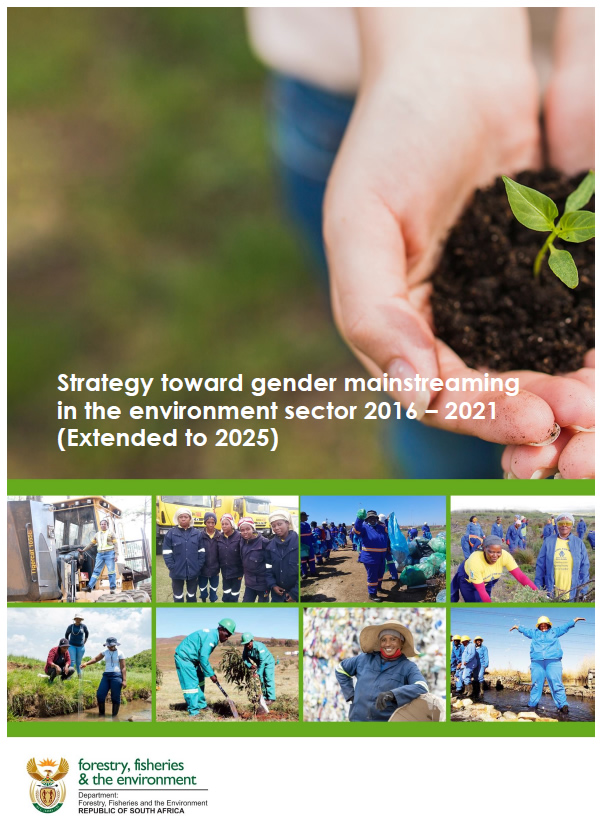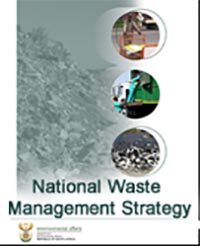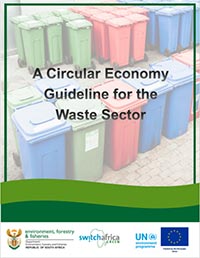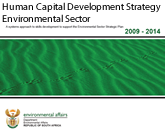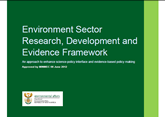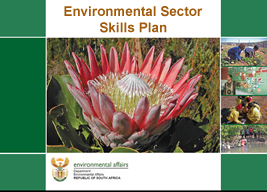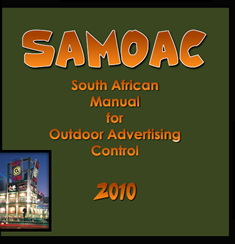Strategy and framework
Strategy toward gender mainstreaming in the environment sector 2016 – 2021 (extended to 2025)
National Waste Management Strategy (NWMS)
The National Waste Management Strategy (NWMS) is a legislative requirement of the National Environmental Management: Waste Act, 2008 (Act No. 59 of 2008), the “Waste Act”. The purpose of the NWMS is to achieve the objects of the Waste Act. Organs of state and affected persons are obliged to give effect to the NWMS.
Circular Economy Guideline
This guideline focuses on the transition to a circular economy (CE) in the waste sector in South Africa. The guideline places emphasis on materials flow and the materials value chain, which is just one aspect of a wider circular economy. A circular economy approach, in turn, is just one of several ways to achieve a green economy through sustain-able consumption and production.
Human Capital Development Strategy Environmental Sector
A systems approach to skills development to support the Environmental Sector Strategic Plan
This Human Capital Development Strategy (HCDS) arises out of the constitutional imperative for a clean, healthy environment that benefits current and future generations, and the impetus to strengthen opportunities associated with a green economy for South Africa. Its time frame is 2009-2014, which is aligned with the MTSF of 2009-2014. The MTSF prioritises skills development in South Africa, and emphasises the importance of quality in the education, training and skills development process.
read more... [870 kb]
Environment Sector Research, Development and Evidence Framework
An approach to enhance science-policy interface and evidence-based policy making
This document addresses the need for a common framework for the collection of solid evidence that can be used in support of environment sector policy decisions and for the achievement of sector priorities. In response to the pressing environmental issues of our times the framework is seeking to develop a more rigorous approach that gathers, critically appraises and uses high quality research evidence to inform policy-making and professional practice.
read more... [949.35 kb]
Environmental Sector Skills Plan (ESKP)
The Environmental Sector Skills Plan(ESSP) describes the current status quo with regard to demand and supply of environmental skills, and provides the best available information on scarce and critical skills in the sector at present from a supply and demand perspective.
South African Manual for Outoor Advertising Control (SAMOAC)
The main aim of SAMOAC is to initiate and co-ordinate the control of outdoor advertising. It is aimed at minimising the impacts of outdoor advertising while maximising the benefits of this advertising medium at the same time. This first document was developed by the then Deaprtment of Environmental Affairs and Tourism (DEAT) in 1998 in cooperation with the National Department of Transport. Up till now it was expected of the various controlling authorities to provide legal status to SAMOAC by means of appropriate legislation.


